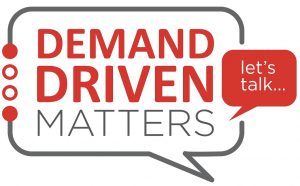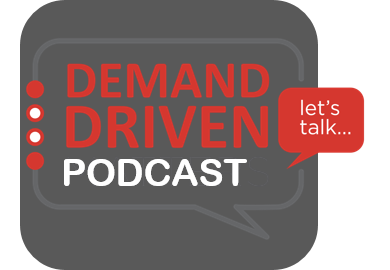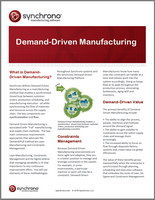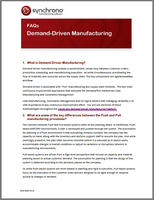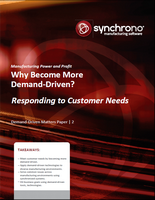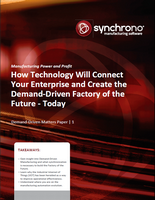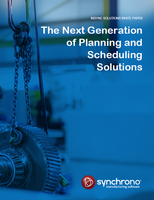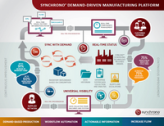by Jim Shore
Through this guest blog series, I’d like to share some of my experiences implementing supplier quality and Lean manufacturing initiatives by focusing on eKanban systems. This first entry offers advice for planning an eKanban rollout – suggestions that can also be applied across any Lean manufacturing project.
As a result, my hope is that you, too, will experience successful Lean results.
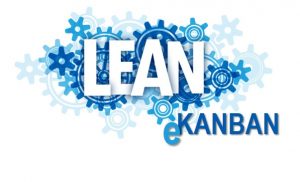
Leadership matters
My training as a U.S. Marine gave me many skills I carried over into civilian life and into my work as a Lean practitioner. First, I gained deep respect for strong leadership; and second, I’ve come to value a pragmatic approach to project execution.
Successful projects start with buy-in from the top and an eKanban initiative is no exception. At a minimum, recruit an executive sponsor to serve as the project spokesperson – someone who will fully support and clearly communicate with all stakeholders the rationale for the project. I know it sounds simple. Even though the benefits to the business are real (e.g., reduced inventory waste and carrying costs and more) asking people to change the way they work is also real. Let your leaders know project success is accelerated through gaining universal buy-in. (If you think about it, this is also a waste-reducing, Lean strategy!)
The reality is that sometimes change is welcomed and other times you may meet resistance. Efficiency programs, whether Lean, Six Sigma or Theory of Constraints (ToC), require that teams understand the impact change can have on an environment. Change management strategies stress over-communication of:
- What the organization intends to accomplish;
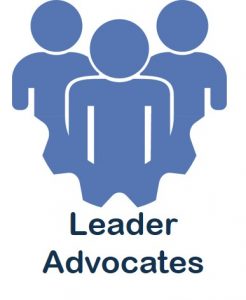
- Why the organization is undergoing the change;
- What the change means to each individual;
- How success will be measured;
- How accountability will be measured.
From the plant floor to senior management, buy-in starts with a clear rationale and explanation of how the new eKanban process or Lean methodology will add value. Leaders must effectively engage all levels of the team; explaining how the new process is great for them, the company, the customer and suppliers (for those using supplier Kanbans). The last two bullets are extremely important. Ensure it is clear how success will be defined and how everyone will be held accountable for achieving it. In my experience, the best method is tying the annual bonus to the success of the project.
Overcoming barriers to create lasting change vs. “initiative-of-the-month” change
While rare, resistance can manifest as blatant sabotage of the new Lean initiative. More likely, resisters will remain quiet and hope the advocates of the new method will lose enthusiasm and the execution of the Lean project will fade, reverting to the status quo. To reverse this, make them part of the solution.
On an eKanban project I led for a materials testing and extrusion-control instrumentation manufacturer, the rollout of the new software involved multiple sites. Corporate leadership sponsored and evangelized the project, but we still needed buy-in at the local plant level. By involving outspoken resisters in the process, we ended up gaining some real advocates – it also helped that we were able to reduce the replenishment process from 66 to just 6 simple steps.

It goes without saying that for this – and any eKanban project – you achieve success through consistent communication and universal team buy-in. Depending on where your replenishment occurs, this principle extends beyond the four walls of an individual plant or enterprise, to your suppliers. (I’ll provide advice for engaging suppliers in the next post.)
As part of their advocacy for the eKanban initiative – or any modern demand-driven supply chain project – leaders need to distinguish the project as a serious, ongoing operating process, not an initiative of the month.
Drive the planning process with bottom-line facts
A significant part of the planning process is business justification. Automating replenishment with an eKanban system provides some highly quantifiable returns.
There is a real cost of carrying inventory and eliminating this cost frees up accessible cash that can be reinvested into the company. Consider the following:
- The cost of just carrying inventory at a component level adds 10% to the valuation of the actual part – and that valuation increases by 10% for every month the material is not transformed into sellable goods.
- On average, the cost of carrying finished goods is approximately 20% of its cost.
For manufacturers managing materials with expirations, these costs can be compounded through scrap.
These are just some examples of costs I help clients quantify as part of their business case for investing in an eKanban solution. Examine how these cost savings could impact your business. You can see how real-time inventory replenishment with an eKanban system can pay for itself fairly quickly.
In the next post, I’ll cover some best practices for eKanban implementations utilizing Kaizen events and value stream mapping.
Related resources:
Article: Going eKanban – Moving from a Manual to an eKanban system
Case Study: Continuous Improvement Immersion + the Right Tools Proves Profitable for Dynisco
White Paper: Common Barriers to Moving from Push to Pull Manufacturing
Jim Shore is the Principal of Quality Lean Solutions, a Consultant Firm that specializes in Medical Device companies, Supplier Quality and Lean Manufacturing principles. Mr. Shore is co-author of “Proactive Supplier Management in the Medical Device Industry” (2016: Quality Press). Jim has 25 years of quality and supplier management experience in medical devices, semiconductor, aerospace and defense for firms and organizations including Titan Medical, Nypro Healthcare, Boston Scientific, Aspect Medical, Brooks Automation, Raytheon and ACMI Gyrus (now Olympus). He is Six Sigma Black Belt and Quality Manager/Operations Excellence-certified by the American Society for Quality (ASQ), as well as an ASQ-certified Quality Auditor and Mechanical Inspector. A veteran of Operation Desert Storm, he served in the U.S. Marine Corps for more than 15 years.





